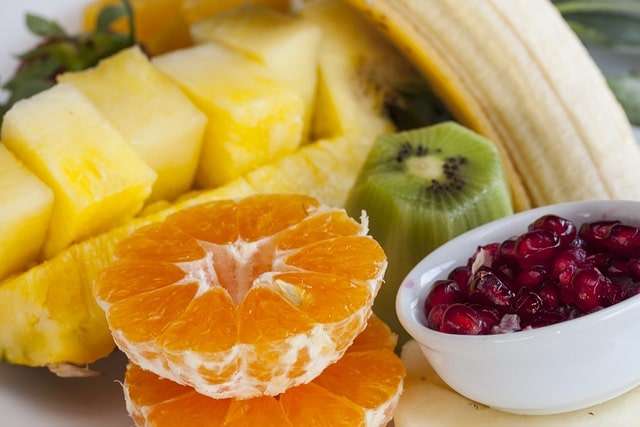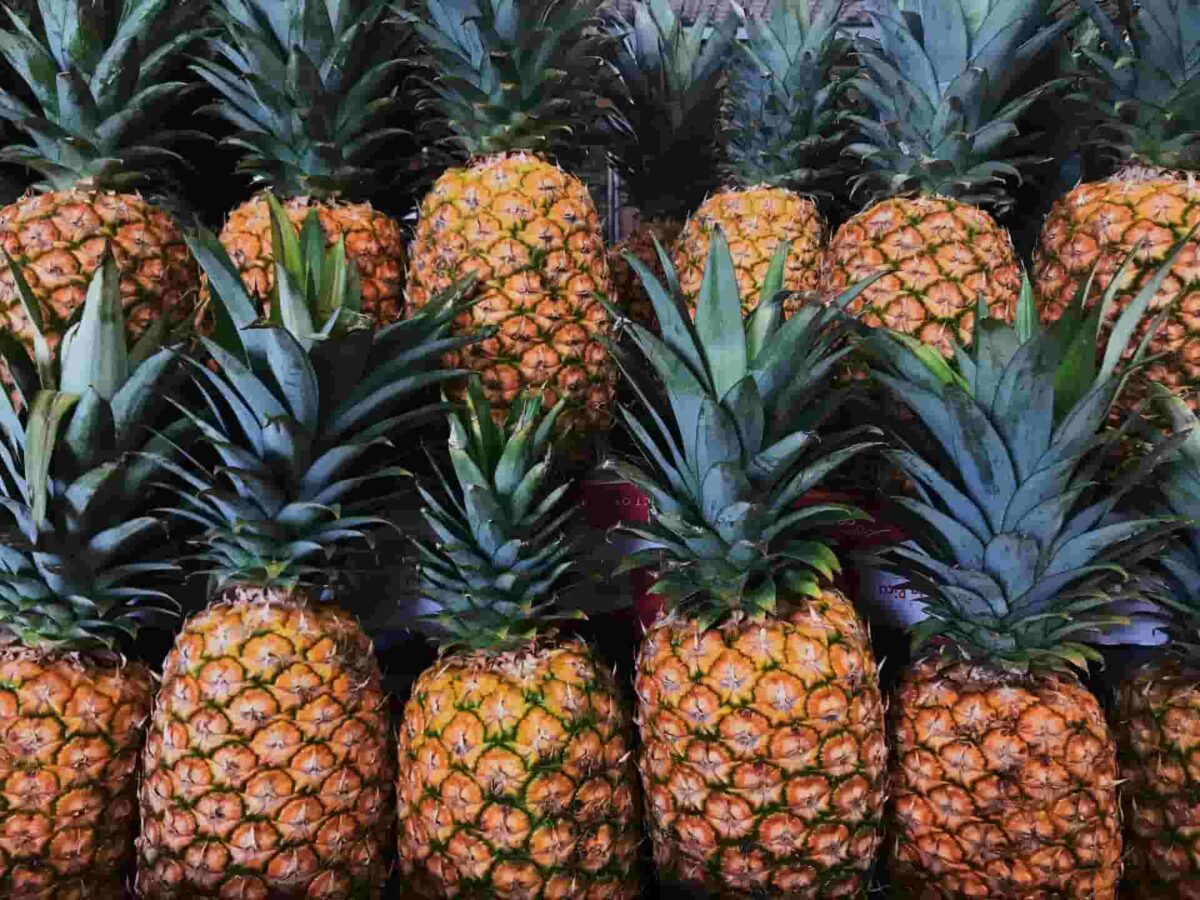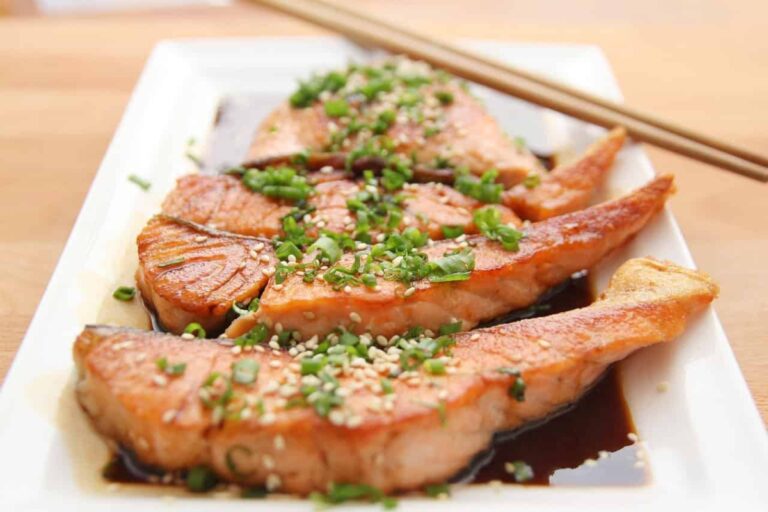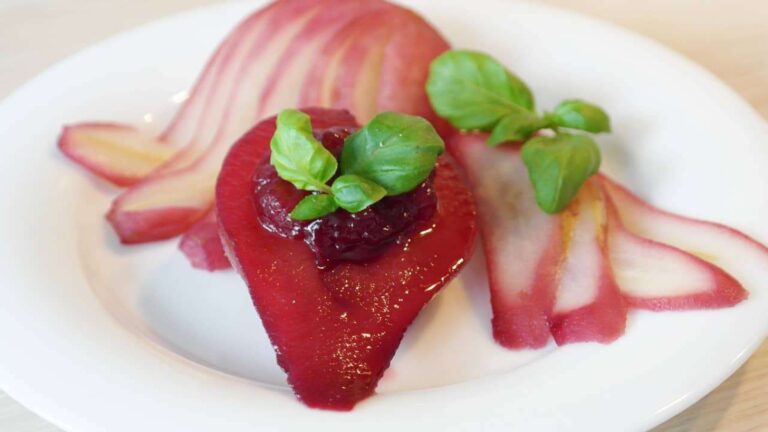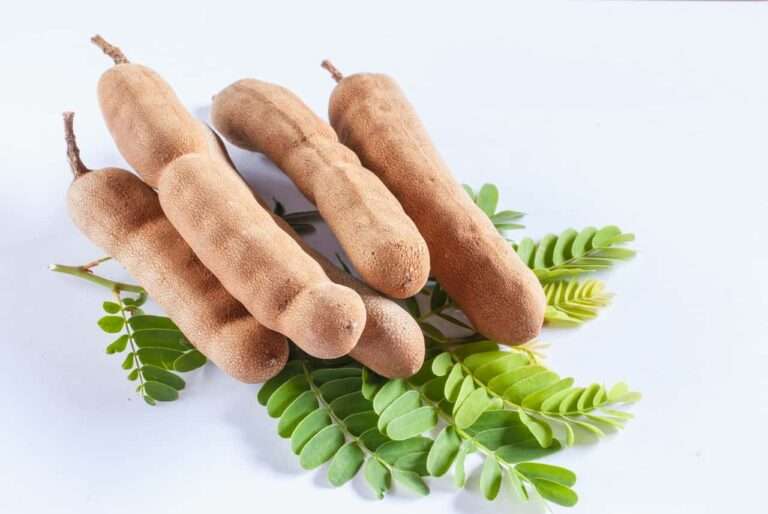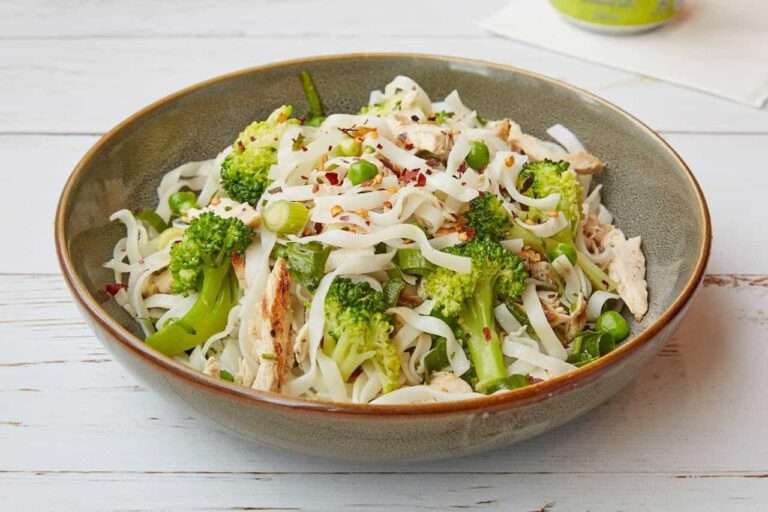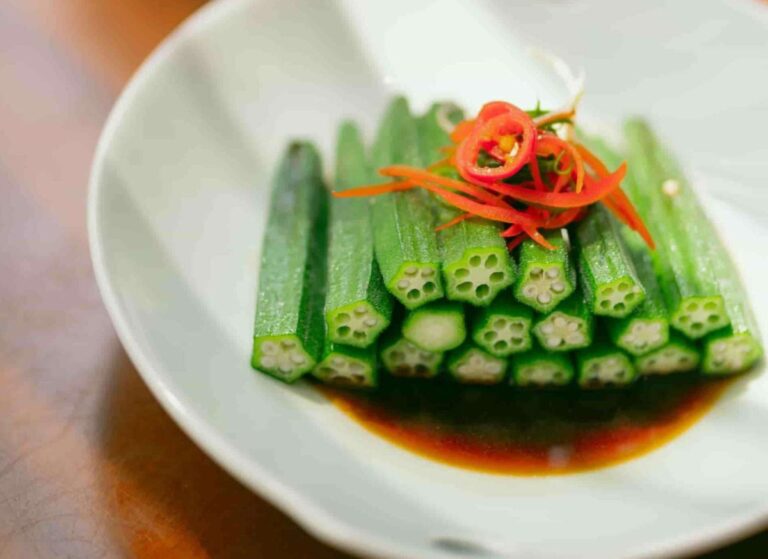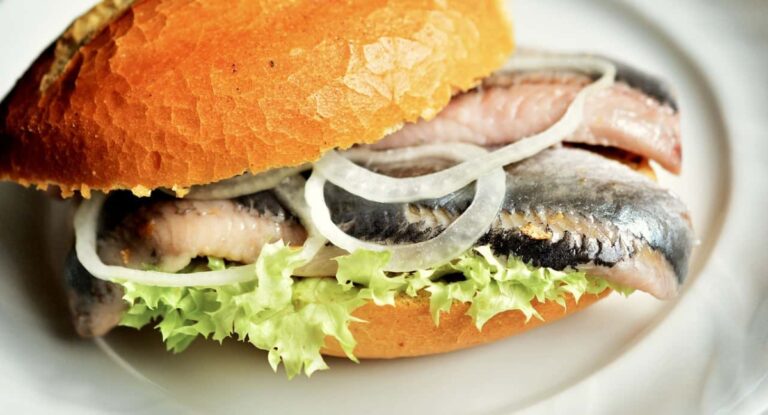Pineapple 101- kitchen insights and benefits
Did you know that pineapples contain an enzyme called bromelain, which assists the body in breaking down the food that it gets to eat?
- That is true despite the fact that it could be surprising to some. Bromelain is released into our mouths as we chew pineapples, and it is in our mouths that it first starts to break down proteins. Sadly, by the time the pineapple reaches our intestines, the enzyme has already been degraded, which means that we do not need to be concerned about the pineapple damaging our digestive system in any way. Because of its high bromelain content, raw pineapple juice may also be used as an effective meat marinade and tenderizer.
- South American climates are ideal for the growth of pineapples, which are classified as tropical fruits. Originating from the region that spans the border between southern Brazil and Paraguay in South America. The cultivation of pineapples may be traced back to the Maya and Aztec civilizations in Mexico, and its subsequent expansion across South America, the Caribbean, and Central America.
- James Dole, the most well-known pineapple entrepreneur, arrived to Hawaii in 1900 and established the first pineapple plantation there. This was just a few years after John Kidwell brought the pineapple business to Hawaii for the first time. The corporation known as “Dole” is still a key player in the pineapple market today.
- The pineapple plant generates approximately 200 blooms of various colours while it is producing its fruit. These flowers range in hue from lavender to light purple and scarlet. As they ripen, the individual fruits of these blossoms, which look like scales, fuse together to form the pineapple.
- By the side of the road in most tropical nations, you may buy pineapple as a snack either whole or half. In addition to being a well-liked tropical beverage on its own, pineapple juice is also an essential component in the Pia colada cocktail. At pineapple canneries, the peels, cores, and ends of the fruit are not thrown away but rather employed in the production of a variety of goods such as vinegar, alcoholic beverages, and food for animals.

Pineapple nutrition values and health benefits
- Pineapples are an excellent choice for a nutritious snack since they contain few calories but a significant amount of nutrients. Pineapples contain trace amounts of several nutrients, including the vitamins A and K, as well as the minerals phosphorus, zinc, and calcium.
- As can be seen, in addition to other minerals, this fruit has an exceptionally high concentration of the anti-oxidants vitamin C and manganese. Vitamin C is essential for immune system health, iron absorption, as well as growth and development, and manganese, which has antioxidant properties and helps with both growth and metabolism, is also required. The majority of meals include trace levels of vitamin C as well as the mineral manganese.
- Antioxidants may assist to fend off inflammation, which is a contributing factor in the development of cancer as well as other chronic diseases. This may make antioxidants useful for preventing cancer and other chronic diseases. Pineapples also include other micronutrients including copper, thiamine, and vitamin B6, all of which are essential for the normal operation of a healthy metabolism. Pineapples are a good source of all of these micronutrients.
- Not only are pineapples rich in nutrients, but they are also rich in antioxidants, which are substances that help your body fight against oxidative stress. Pineapples have a high nutritional and antioxidant content. An build up of free radicals, which are unstable molecules that cause harm to cells, is what gives rise to the condition known as oxidative stress. Chronic inflammation, impaired immune function, cardiovascular disease, diabetes, and some forms of cancer are only few of the conditions that are frequently linked to it.
- Pineapples include a very high level of the antioxidants known as flavonoids and phenolic compounds, both of which may be found in the fruit in quite high concentrations. Pineapples also contain a high level of vitamin C. Two studies suggest that the antioxidants found in pineapple may have heart-protective qualities; however, there is inadequate evidence for humans at this time.
- In addition, the majority of the antioxidants that can be found in pineapple are known as bound antioxidants, which indicates that their benefits on the body are known to remain for a longer period of time.
- On the other hand, cancer is a disorder that lasts for a long time and is characterised by unchecked cell multiplication. Oxidative stress and chronic inflammation are two of the most common variables that contribute to the progression of this condition. Several studies have indicated that pineapple and its components, such as bromelain, may reduce the risk of getting cancer in the body by lowering levels of oxidative stress and inflammation.
- Pineapples have been used in traditional medicine for many years, and it should come as no surprise why. They include a wide variety of vitamins, minerals, and enzymes, such as bromelain, which, when eaten in conjunction with one another, may aid to improve immune function and reduce inflammation.
- In addition, research has shown that bromelain may reduce the indications of inflammation, hence enhancing immunological health and wellbeing. It is possible that persons who suffer from inflammatory arthritis might benefit from taking bromelain due to the anti-inflammatory properties it has. According to the findings of one study, using bromelain tablets was equally as effective as using conventional pain medication in reducing the symptoms of osteoarthritis in the lower back.
- It is likely that eating pineapple may reduce the length of time needed to recover following invasive medical procedures or strenuous physical activity. In addition to being helpful for replenishing glycogen stores after exercise, this fruit also contains a tiny amount of bromelain, which has anti-inflammatory properties and is responsible for some of its other benefits. In addition, proteases like bromelain, which are contained in pineapple, have been demonstrated to speed up the recovery process of muscles after intense exercise by reducing the inflammation that is present in the area around the damaged muscle tissue.
100g of pineapple has 50 calories (209kj), 05g protein, 0.1g fat, and 13g carbs, including 1.4g fibre.
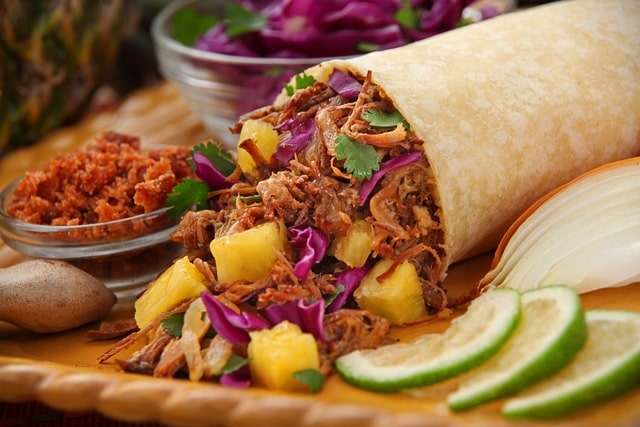
How to store pineapple and how to buy them
- Let us start by selecting the proper pineapples so that you can make sure your fresh pineapples keep for as long as they possibly can. To begin, you should examine it to ensure that it does not have any tender places or injuries. The next thing you should do is examine the leaves. They need to retain their green colour and not show any signs of wilting or drying out.
- Pineapples are often found in the part of the grocery store that does not need refrigeration; however, this is not the optimal temperature for them to be kept at. If you want to use the pineapples within about two days, you should only keep them at room temperature in the pantry or on the countertop rather than in the refrigerator. When kept for an extended period of time under such circumstances, the quality of the food will deteriorate, and after a few more days, there is a risk that it would rot.
- The pineapple has to be stored in the refrigerator, as you almost certainly well know. You may store it in the crisper drawer while still in the plastic bag it was delivered in, but you should make sure there is enough air circulation around the fruit.
- Place the cut pineapples in a container with a tight-fitting lid or a freezer bag, and then place the container or bag inside the refrigerator. If you are going to use the bag, you should try to get as much air out of it as you can. Once again, check to see that the flesh is not disturbed while it is being stored.
- Freezing pineapples is the best method to use if you want to keep them for an extended period of time.
- Prepare the pineapples by peeling them and chopping them into the proper sizes and shapes. After that, place them in containers that are airtight or bags that may be frozen.
- If you want to be able to simply defrost just a few pieces rather than the whole container or bag, pre-freezing the pieces is the way to go.
- Lastly, place the chopped pineapple in a freezer-safe container, affix a label with your name and the current date, if desired, and freeze it.
- The pineapple that was previously frozen should be defrosted in the refrigerator when the time comes.
- At room temperature, a whole pineapple should keep its freshness for two to three days, while in the refrigerator, it should keep its quality for five to six days. And for at least a few more days after that, it should continue to be edible but not very delicious.
- If stored in a freezer bag or an airtight container in the refrigerator, cut pineapple will remain edible for up to four days. The duration of that interval is increased by doing the additional work of drowning it in simple syrup.
- The following are indicators that a pineapple has gone bad:
- upper leaves that have withered or become discoloured. As that procedure begins, there is no time like the present to start eating the fruit; otherwise, you will never get the chance.
- Bruises or soft patches might be present. In most cases, the damaged region may be removed by cutting it off, and the remaining portion of the fruit can be consumed.
- bottom that is mouldy, damp, or mushy. If it has just recently begun to develop mould, you should promptly chop the fruit into pieces.
- An unpleasant odour. It is too late for the fruit if it smells sour instead of fresh and delicious when you smell it.
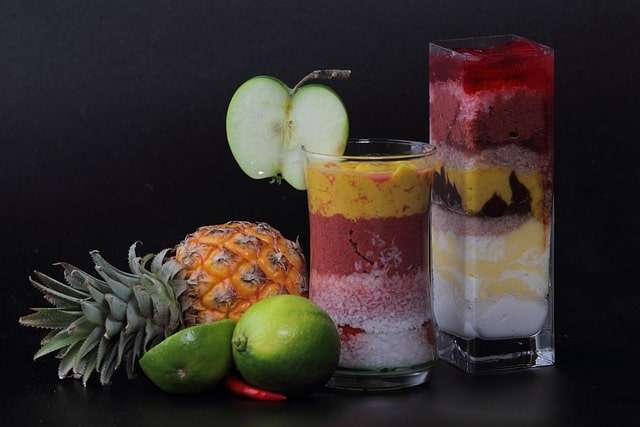
Cooking techniques, secrets, and tips from the kitchen
- Pineapple is often considered to be one of the most adaptable fruits. In addition to sweet and savoury foods, salads, and drinks all benefit from its incorporation. Moreover, it may be found in a wide range of meals all throughout the globe, most notably in the cuisines of the United States, Asia, and the Caribbean. Some recipes ask for chopped up chunks of pineapple, while others just use the juice from the fruit. You can get prepared versions of either one, but the flavour of fresh pineapple is in a league of its own.
- While preparing a pineapple that is still whole, the first things that are removed are the leafy crown at the top and a small slice from the bottom. After that, the pineapple is usually divided lengthwise into halves or halves, and then it is cut into smaller wedges. Finally, it is sliced into smaller pieces. Another option for slicing pineapple is to use a circular biscuit cutter. The removal of the tough inner core and the outer skin, both of which are thrown away, is made more difficult as a result of this. If you cut the pineapple over a plate, you will be able to collect all of the juice. Cutting a pineapple into the shape of a boat, which is an eye-catching presentation dish, is a fun choice for pineapple-based recipes.
- A cooked ham that is adorned with pineapple rings and maraschino cherries makes for an excellent centrepiece for a celebratory supper. It may be something that your family does every year for Easter or Christmas, or it could just be something that harkens back to times gone by. Honey and pineapple both provide flavour to the glaze that is used on this delicious smoked shoulder gammon. The fruit is not only there for aesthetic purposes since it serves the function of supplying sweetness to counteract the saltiness of the gammon; hence, it is not there simply for decoration.
- Pineapples are one of the few fruits that are able to withstand the heat of the grill well and are also quite simple to prepare and cook. This dish has a taste that is somewhere between sweet and tart, and it has a note of floral to it. It goes nicely with traditional barbecue cuisine. You may serve grilled pineapple as a side dish for grilled pork or chicken, or you can use it as a garnish for veggie kebabs. To get the most out of it, pair it with robustly flavorful and somewhat spicy marinades, such those found in South American grilled pork ribs and Caribbean chicken. You should also experiment with the several unique savoury seasoning alternatives available for darker meats, such as venison and elk.
- Sweet and sour pork with pineapple is a popular choice for Cantonese food in both the United States and China. The addition of just a little touch of pineapple gives it an extra-sweet jolt of flavour that almost everybody can appreciate. A significant portion of Cantonese food is prepared using a cooking method that emphasises the use of sauces. If you so want, the recipe for the sauce that is supplied here may be used for a variety of different dishes. The preparation of this meal requires some time, but the end result is certainly deserving of the investment of that time.
- Several tropical fruits, including banana, basil, caramel, chile pepper, cilantro, cinnamon, coconut, ginger, lime, macadamia, mango, orange, pepper, raspberry, rosemary, strawberry, and tamarind, go well with pineapple. It is possible to construct a wide variety of pineapple cocktails, and the flavour of the pineapple goes particularly well with brandy, orange liqueurs, and even rum.

History of pineapple from the beginning until today
- Pineapples did not just end up on Caribbean islands by chance; they were brought there through centuries of Indian migration and trade. The maritime peoples were experts in navigating the oceans, seas, and rivers of the tropics in their dugout canoes and used these vessels for exploration, raiding, and commerce. They first saw the herbaceous plant they later came to know as “anana,” or “good fruit,” in the interior regions of the countries that are now Brazil and Paraguay. The “good fruit,” so named for its exceptional sweetness, was a mainstay of Incan tribe affirmation feasts and ceremonies. Indian wine was also made from this grape.
- In November 1493, while on his second journey to the Caribbean area, Christopher Columbus anchored off the coast of Guadaloupe, a lush, volcanic island, and landed there to investigate a deserted Carib settlement. This was the first time a European had seen a pineapple. European sailors sampled and wrote about a strange new fruit with a rough, segmented surface like a pine cone and a firm, apple-like pulp on the inside.
- It took European gardeners about two centuries to master a hothouse technique of cultivating pineapples, despite their best efforts. Therefore, the pineapple remained so rare and desirable far into the 1600s that King Charles II of England sat for an official photograph after receiving a pineapple as a gift, a gesture that symbolised royal privilege at the time.
- Pineapples were the undisputed stars of the community’s diet, while other fruits (fresh, dried, candied, and jellied) were also big draws. It was the king of exotic fruits because of its extreme rarity, high price, stellar reputation, and stunning good looks. The pineapple eventually became the symbol of the most significant feasts, to the point that it was elevated to the highest point of the table with its own pedestal.
- The US Department of Agriculture brought “Smooth Cayenne” to the Philippines in the early 1900s, during the era of American colonial rule. Canning on a large scale has begun in the Philippines and other parts of Southeast Asia as early as 1920. Although World War II dealt a major blow to this industry, Hawaii continued to dominate worldwide commerce until the 1960s.
- For as long as anybody can remember, the Philippines has been one of the world’s leading pineapple exporters. After the 2014 acquisition of Del Monte Foods by Filipino firm Del Monte Pacific Ltd., the Del Monte plantations are now under local management.
